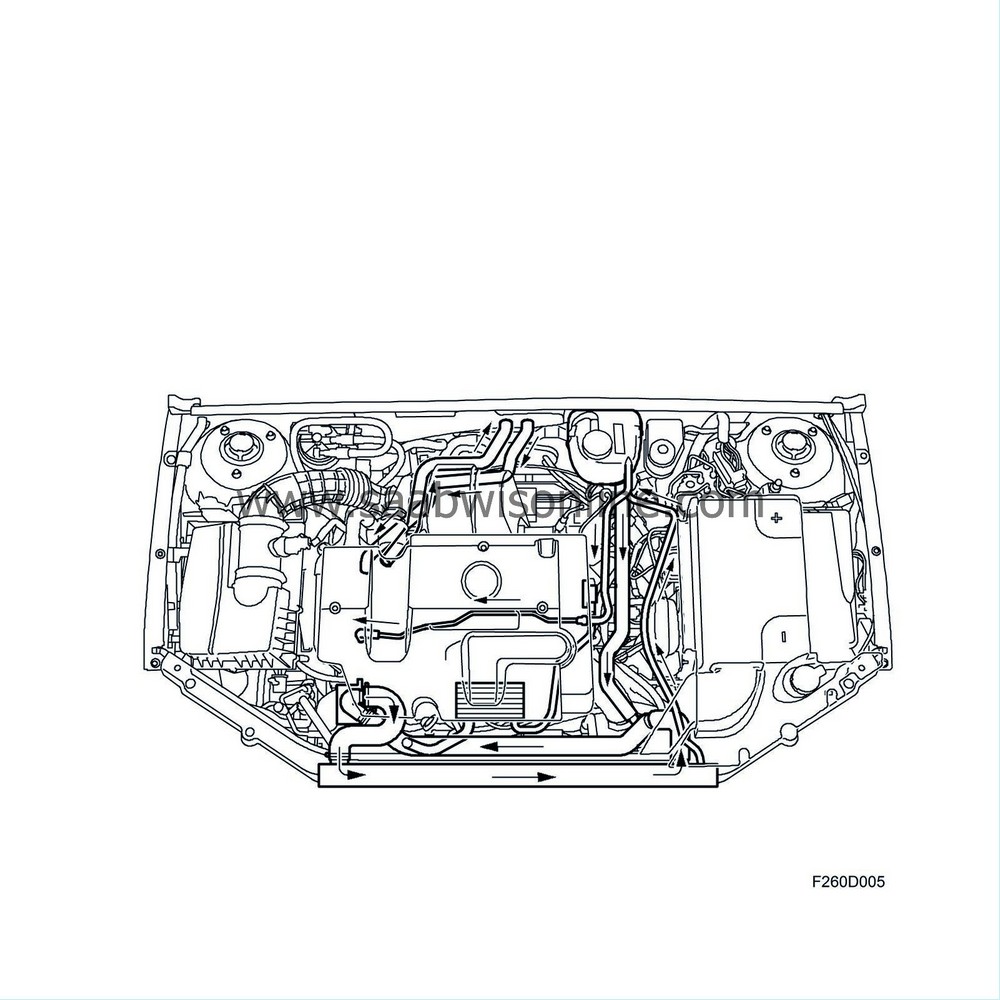Short description
| Short description |
The coolant pump, which is of the impeller type, is located on the top right of the engine block and driven by the crankshaft via a poly-V-belt. The thermostat is a standard wax-type thermostat and is located in a housing on the front right of the cylinder head. The thermostat starts to open at 92°C (198°F) and is fully open at 107°C (225°F).
The expansion tank is located on the left-hand side of the engine bay. The tank is connected to the thermostat housing, the top left of the radiator and to the top of the cylinder head. The purpose of the latter connection is to bleed the cooling system. There is also a connection for bleeding the engine. The coolant in the expansion tank is circulated through the system. The expansion tank cap has a relief valve that opens at 1.4 bar.
| Auxiliary heater |
Due to the high efficiency of the diesel engine, it produces significantly less excess heat than a petrol engine. This means that the engine and the cabin heat up more slowly or, in extreme cold weather, do not reach a suitable temperature. In order to address this problem, the diesel engine is equipped with an auxiliary heater that assists the engine in quickly reaching a suitable working temperature.
The auxiliary heater is located on the bulkhead in the engine compartment and is connected in a manner so that the engine coolant flow passes through the heater and is heated before it reaches the heating and ventilation unit. This results in quick heating of the cabin. When the engine is running, the heater receives a signal via a relay from the SID which, on the basis of the outside temperature, determines whether the heater is to start. Apart from this outside temperature criterion, the heater also has a coolant temperature sensor which, by sensing the temperature of the coolant, determines whether starting is to be allowed.



